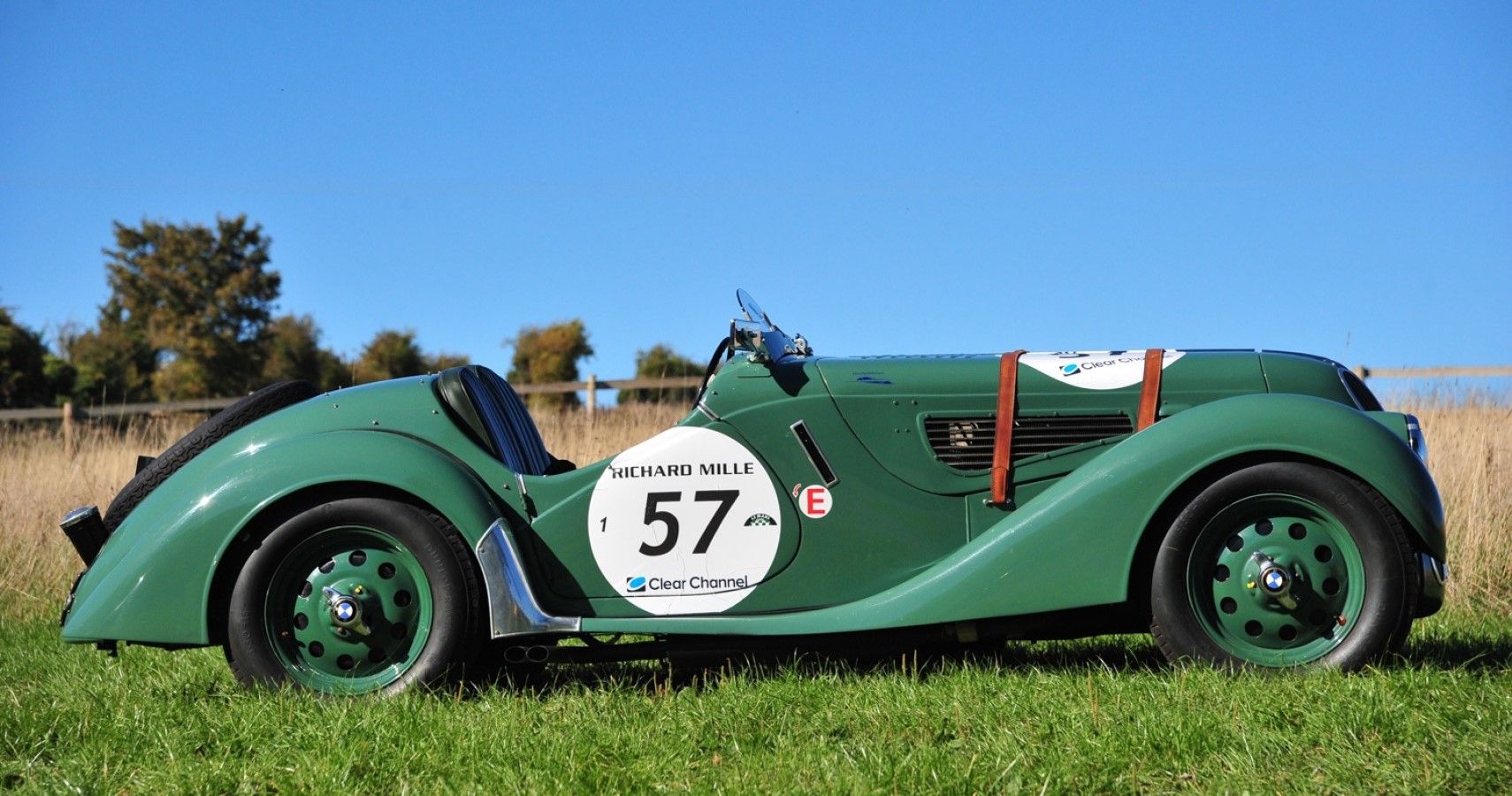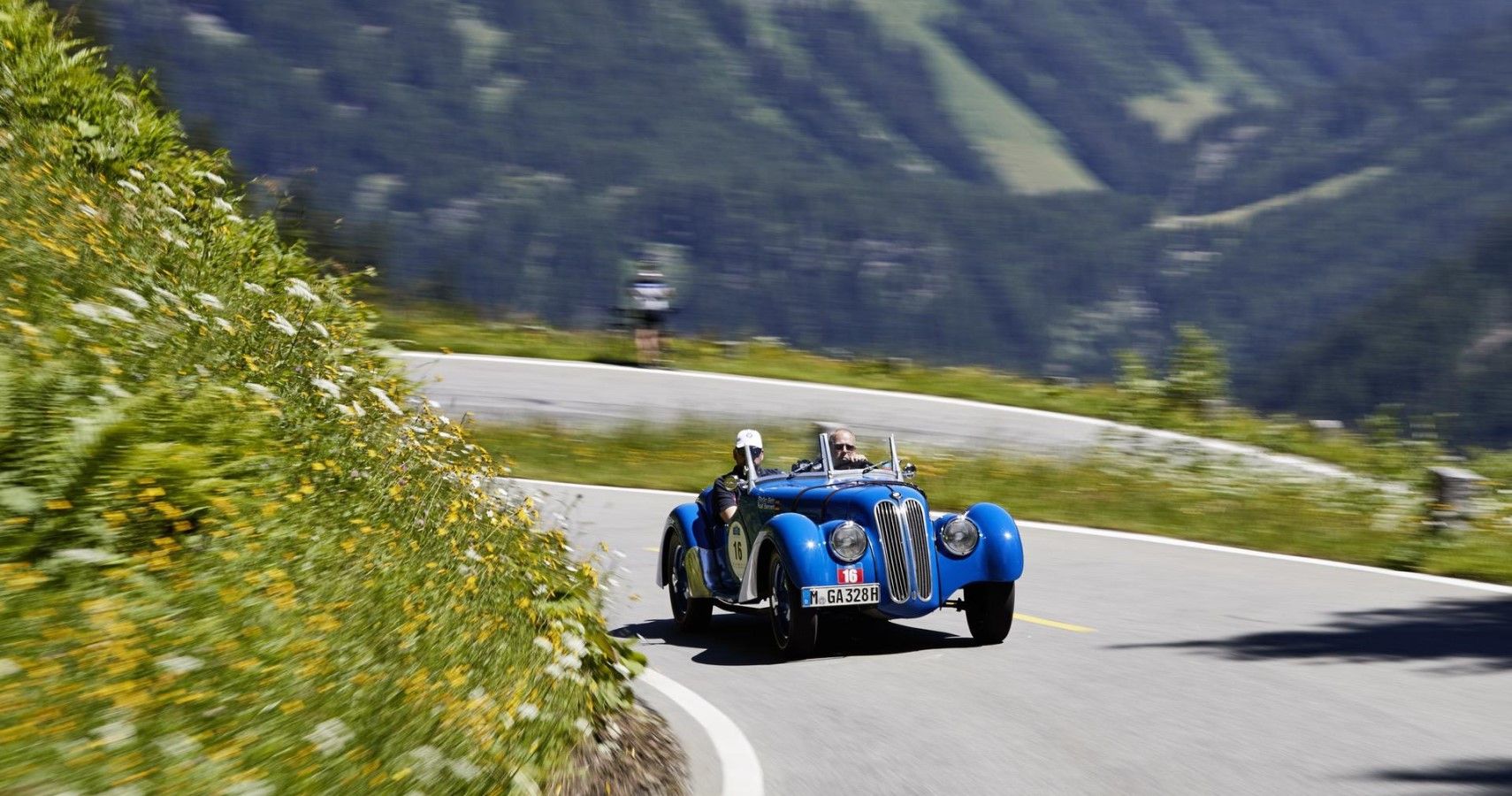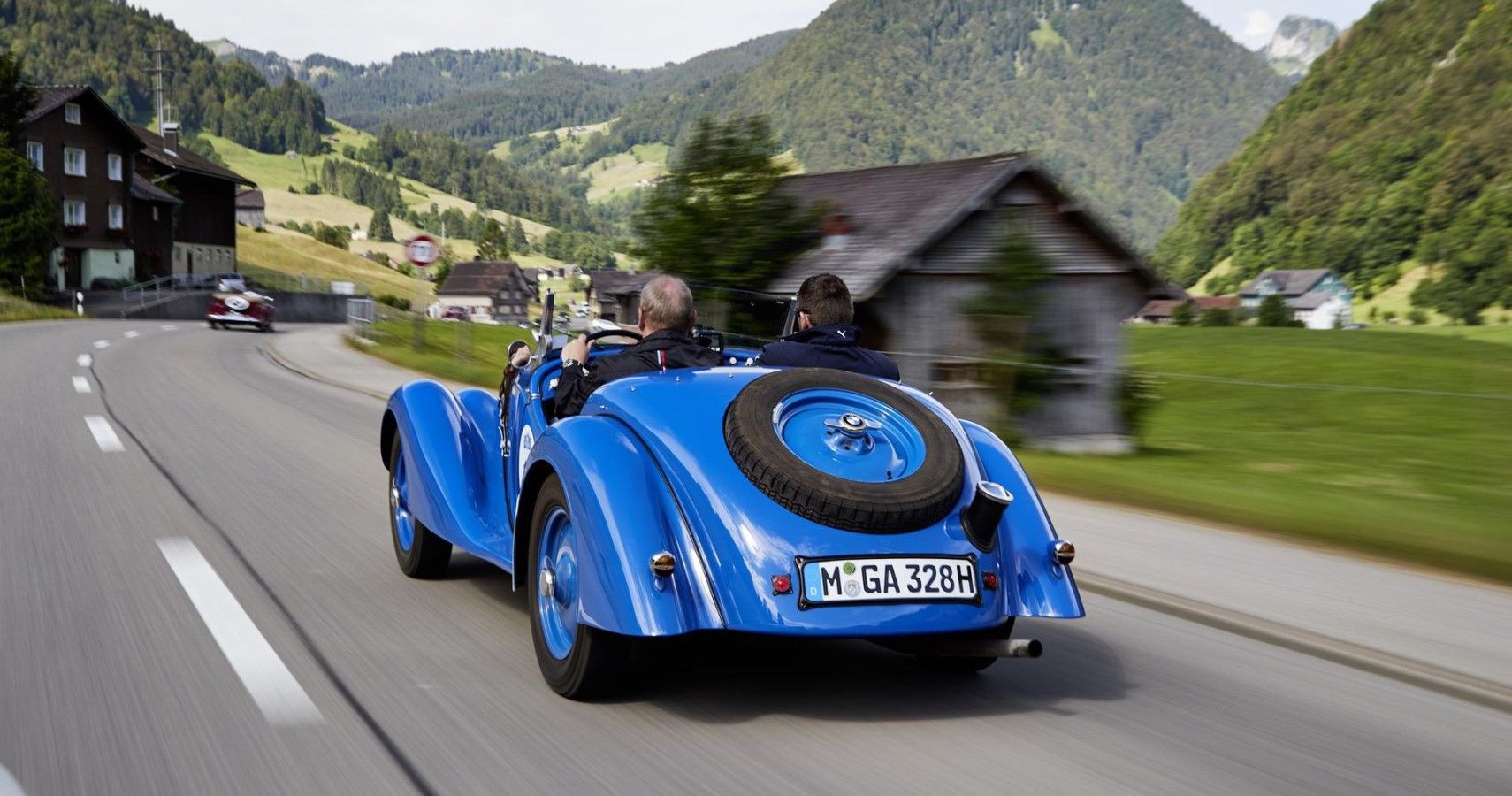The early 1900s were when many automakers started to get a hang of motorsports and Europe saw a boom in sports cars. The BMW 328 Roadster is a very important car for the German automaker as it helped kick-start their racing pedigree. In a distinct way, we should be grateful to this iconic roadster for the impressive line-up of BMW M cars.
The 325 Roadster was a bold new car for the time that defied all convention and built an impressively quick machine. This car made BMW realize the importance of power-to-weight ratio and thus began their pursuit for 'Sheer Driving Pleasure'. The design language was iconic for the time and aligned up with the likes of the Jaguar XK120, Pininfarina's Alfa Romeo 6C2500 SS, and the Austin Healey 100.
In short, this Bimmer was a beauty to behold. Just under 500 units were ever built of the BMW 328 Roadster and just 200 of them exist today. This makes it one of the most dramatic and elusive sports cars of the 1930s. And makes its way into the list of classic cars that are going to increase in value, despite being well over a million-dollars currently.
The 328 Roadster was an iconic race-car and the reason behind BMW's rich racing pedigree.
Origin Story Of This Legendary BMW
The BMW 328 Roadster is a very crucial car that paves this German automaker's rich racing pedigree. It motivated and influenced future sports cars of the time up until the 1950s. This car was conceptualized in the 1930s when cars were a luxury in Germany. The 328 was based on older models like the 315 and 319 which were further derived from the sports cars from Dixi.
The BMW 328 Roadster debuted in 1936 but was only put on sale in 1937. This car was designed by Rudolf Schleicher and Fritz Fiedler, top-notch designers of the time, and used a lot of weight-saving methods to build BMW's first-ever sportscar.
BMW 328 Roadster Had A Complex 80 Hp Inline-6 Engine
We say complex because it always used to fool people at Auto shows. It looked a lot like a Twin-cam Inline-6 but was actually a pushrod unit attached to hemispherical combustion chambers. It had a set of triple Solex 30 JF carburetors that helped this Straight-6 churn out a respectable 80 hp from the 2L motor.
Its performance was quite 'sporty' for the era and thus tallied along well with what BMW wanted to create. The power was sent to its rear wheels only via a 4-Speed manual transmission.
Had An Impressive Power-To-Weight Ratio For Its Time
The 328 Roadster had sportscar characteristics, not because of its performance figures alone, but the fact that it was one of the first cars of the time to put more emphasis on the power-to-weight ratio. This roadster weighed in at just 1719 lbs. for the race-spec and 1829 lbs. for the road-going version.
To give you a present reference of this, the peppy little Mazda MX-5 Miata weighs in at 2,341 lbs. in its highest configuration. So, this made the BMW 328 Roadster show people the importance and fun of having a lighter car.
Driving The BMW 328 Roadster Was A Revelation
With an impressive power-to-weight ratio of its time, the BMW 328 Roadster was an eye-opener for many. Automakers of the time slowly realized how important it is to shave off pounds from a car. The car wasn't compact by any means and was 153.5 in. long, 61 in. wide and 55.1 in. tall. It has a wheelbase of 94.5 in. and the chassis was a rigid ladder frame and fabricated side tubes and box-section cross members.
What all this meant was that it was a stubborn layout that wasn't ready to flinch even under hard cornering. The suspension was stiff because of a swing-axle layout upfront and leaf-sprung hydraulic dampers at the rear. Add hydraulic brakes to this setup, and the 328 Roadster was set out to be a prepped-up race-car for the roads.
The 328 Roadster Carved BMW's Racing Lineage With Sporty Design Cues As Well
The design language is a lot similar to many of the sports cars of the early 1900s. But the BMW 328 Roadster was special because it is what connected the sweeping elongated design language to 'performance'. The body was all aluminum to save weight. It had a swept-back design with two seats and dual flat-screen windshields.
The rear quarter after the passenger compartment was beautifully carved but was quite short as compared to the long Straight-6 holding front section of this roadster. Our favorite rear design cue was the plush positioning of the spare tire. The bonnet had twin-straps to comply with the international racing regulations of the time.
A Million-Dollar Influence Of Racing History
BMW wasted no time in putting the 328 Roadster to test to prove its racing credentials. And boy, did it make its mark. The first victory was at Nürburgring in 1936 when it was driven by Ernst Henne - Motorcycle Land Speed Record holder of the time. He left everyone dumbstruck when the streamlined BMW he was driving blistered past all its rivals right from the start. He clocked an insane average speed of 63 mph.
The BMW 328 Roadster was in no mood to stop as it had 100 class wins in 1937 including the Tourist Trophy and La Turbie Hillclimb. In 1939, it was the first in its class and 5th Overall at the 24 Hrs of Le Mans. All of this has shot the existing 328 Roadster's prices off the roof. Good examples of this iconic roadster easily breach the $1 million mark.
Things get harder as only 200 of them exist today of the 464 examples that were built up until 1940. And of the existing, 120 are in Germany and with people who wouldn't be happy to let go of such a historic piece of racing history. It is one of those few Bimmers that have achieved Million-dollar status, thanks to motorsports.
Sources: Wikipedia.org, Hagerty.com, Bmwblog.com, Silodrome.com, Supercars.net







